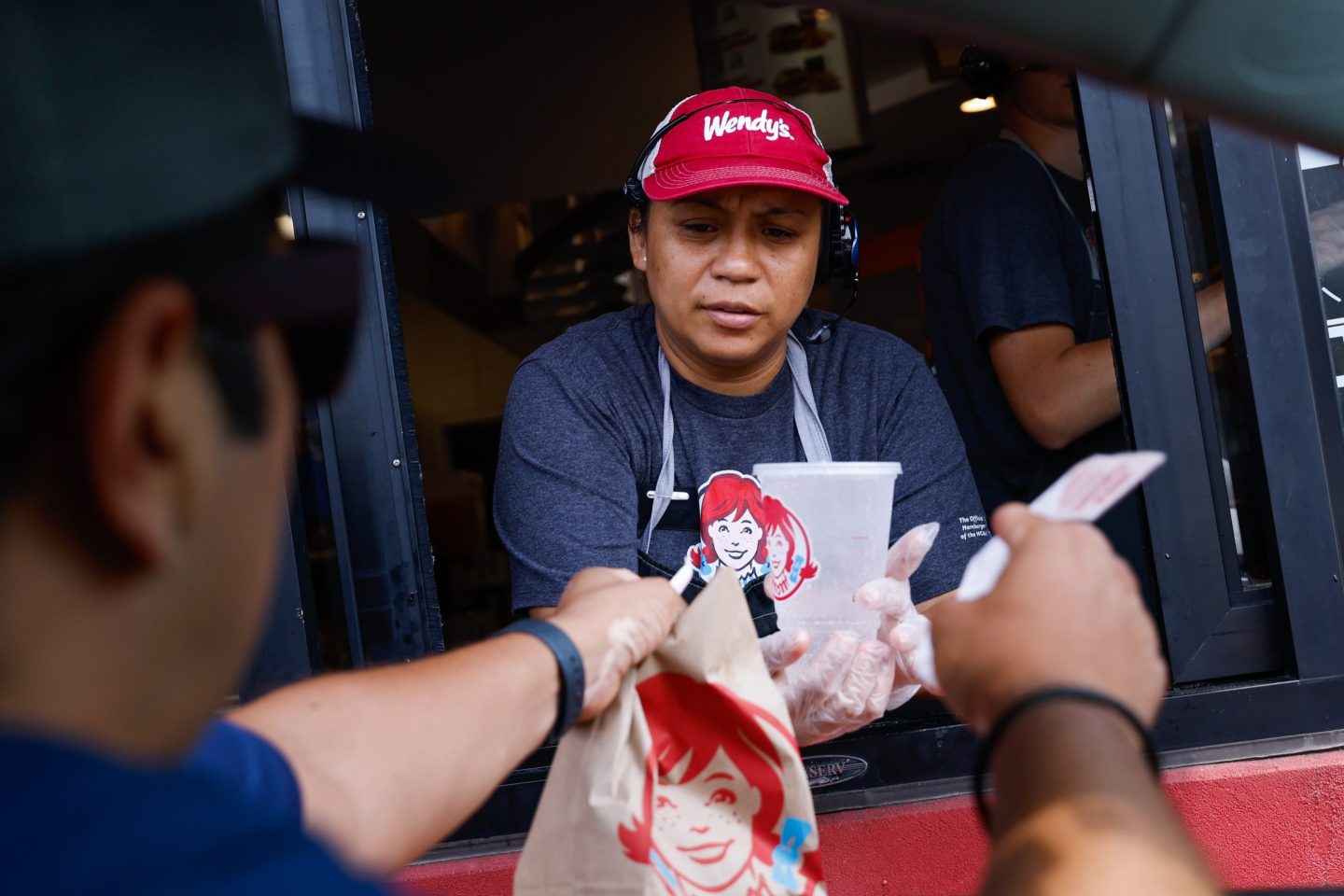Wendy’s customers are used to seeing increased prices of Baconators and frosties, but as early as next year, they may have to get used to those prices changing multiple times a day.
The Dublin, Ohio-based fast food giant will begin experimenting with dynamic pricing, CEO Kirk Tanner said in Wendy’s fourth-quarter earnings call earlier this month. Similar to Uber and Lyft’s price surge features, items will cost more during busier times. The company will invest $20 million in its rollout of digital menu boards, which will allow the company flexibility to offer promotions and discounts during certain times of the day.
“As early as 2025, we plan to test a number of features such as AI-enabled menu changes and suggestive selling based on factors such as weather that we think will provide great value and an improved customer and crew experience,” a Wendy’s spokesperson told Fortune.
Wendy’s announcement of the change came in tandem with slumping fourth-quarter sales. It reported $540.7 million in fourth-quarter revenue, falling short of analysts’ expectation of $546.6 million. The fast-food joint joined the ranks of McDonald’s, KFC and Taco Bell parent Yum Brands, and Burger King parent Restaurant Brands, all of which posted disappointing fourth-quarter sales, largely thanks to customers being unwilling to splurge on pricier fast-food options.
Steven Suranovic, an associate professor of economics at George Washington University said dynamic pricing, particularly price surges during busy lunchtime hours, could catch consumers off guard.
“If people feel like they’re getting gouged, they’re not going to take kindly to this dynamic pricing strategy,” he told the Daily Mail.
Lyft CEO David Risher made a similar admission of his own company’s dynamic pricing strategy, saying in an August TechCrunch interview that riders hate surge pricing “with a fiery passion.” But that hasn’t stopped companies from getting away with the strategy.
Consumers hate surge pricing, but won’t say no to companies implementing it
Consumers are not fans of restaurant dynamic pricing, according to a 2023 Capterra survey of 900 U.S. restaurants goers. Over half called dynamic pricing the same as price gouging, while 65% said dynamic pricing makes it harder to decide where to eat. Four in five consumers check menu prices before deciding what they’re going to order.
But hate it as they may, consumers are also reluctant to turn their backs on services with dynamic pricing, argued Raghuram Iyengar, professor of marketing at Wharton.
Dynamic pricing is more ubiquitous than many think. Iyengar used the example of airfare tickets. Sure, the person sitting next to you is on your same flight and in the same seat, but they likely paid a different amount than you, depending on when they bought their tickets.
“Why? Because in the airline industry, that sort of demand-based pricing….has become the norm,” he told Fortune.
Because dynamic pricing relies on consumers seeing it as normative, the success of Wendy’s foray into the strategy depends on customer expectations, he said.
Indeed, streaming services like Netflix have been masterful at managing consumer expectations when it comes to ending certain features. Despite initial pushback on password sharing crackdowns, Netflix saw over 13 million new users in its 2023 fourth quarter, a victory so definitive that Disney and Hulu decided to copy its password crackdown practices. Netflix announced the end of password sharing months before they began enforcing it.
A 2016 Wharton study found that dynamic pricing could even serve to benefit consumers. Trying to find an Uber on a rainy night is hard, the study argues, but high prices then mean lower prices in a normal demand setting.
Of course, there’s still tremendous potential for the strategy to backfire, Iyengar said.
In the late 1990s, Coca Cola introduced a vending machine with prices that fluctuate with the weather, as determined by a thermometer installed in the machine. On the surface, the machine would be proof of the model of supply and demand, Coke believed: On a hot day, customers would be willing to pay more for a cold drink, even if it was more expensive. Instead, consumers became resentful, and even Pepsi had the gaul to accuse Coca Cola of exploitation.
The product was a failure because the price changes weren’t resonant with customers, Iyengar argued. Wendy’s success with dynamic pricing will rely on their ability to be transparent and justify price surges with reasons that customers—already skeptical of the change—find acceptable, Iyengar said.
“The devil is in the details, so hopefully they will work out the details as they get closer to reality.”












